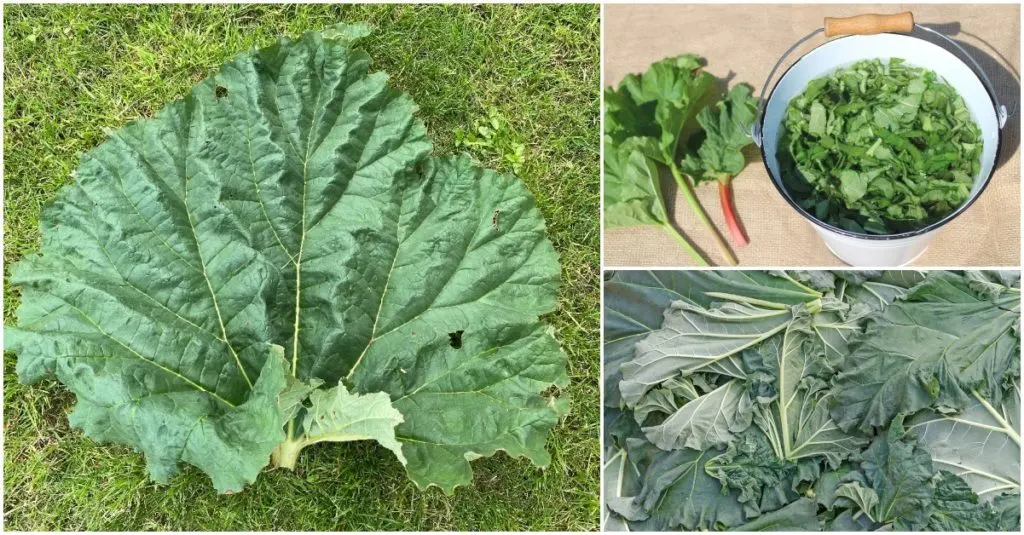
I’ll bet I can guess why you’re here.
You went out to your rhubarb patch with pie on your mind. And when you got there, nestled among the familiar leaves the size of an elephant’s ear, you found this bizarre alien stalk growing up from the midst of your rhubarb.
Once you recovered from the shock and took a closer look, you realized, “Huh, so that’s a rhubarb flower. I didn’t even know they flowered. Are they supposed to do that?”
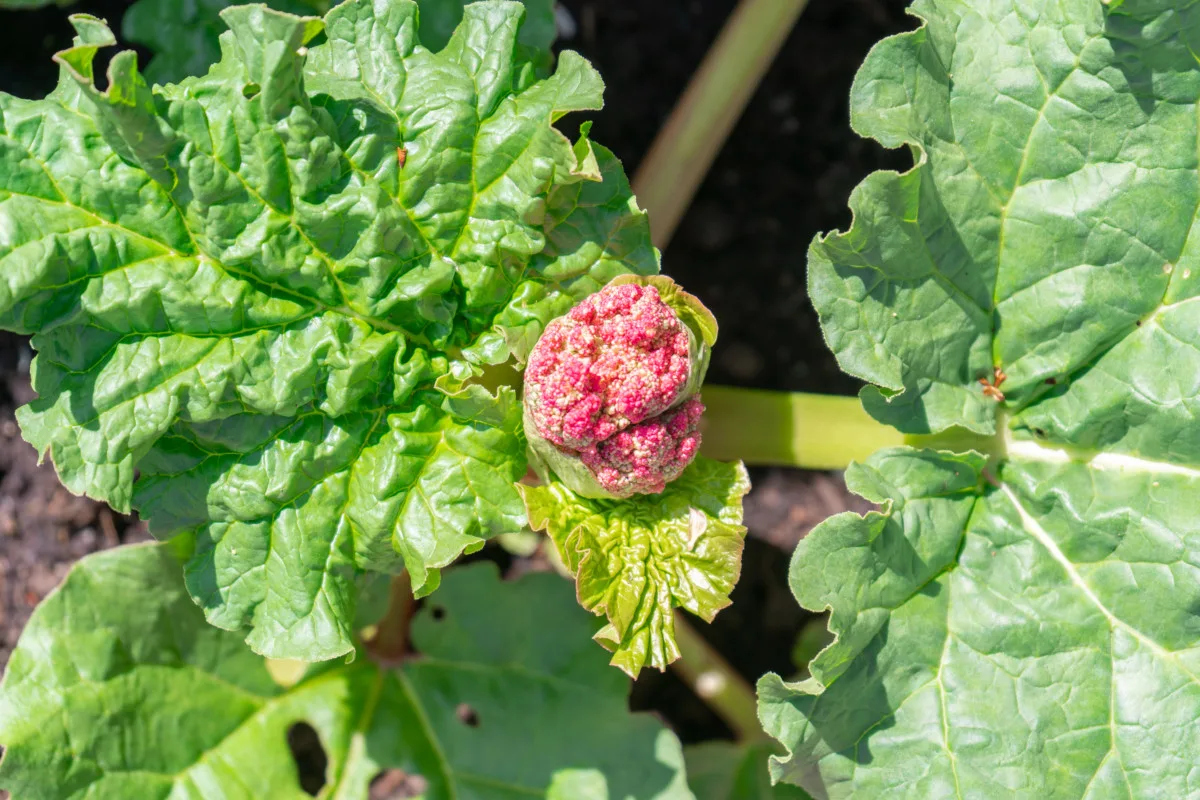
Yup, rhubarb plants are supposed to flower, that is, if you want rhubarb seeds.
But I don’t think you want rhubarb seeds; they make terrible pie. You want plenty of those magenta tart stalks for pie, jam, and all kinds of other delicious rhubarb treats. So, when your rhubarb plant flowers, immediate action is needed to preserve your rhubarb crop.
Let’s look at why rhubarb flowers, what steps need to be taken, and finally what you can do to prevent them from doing so in the future.
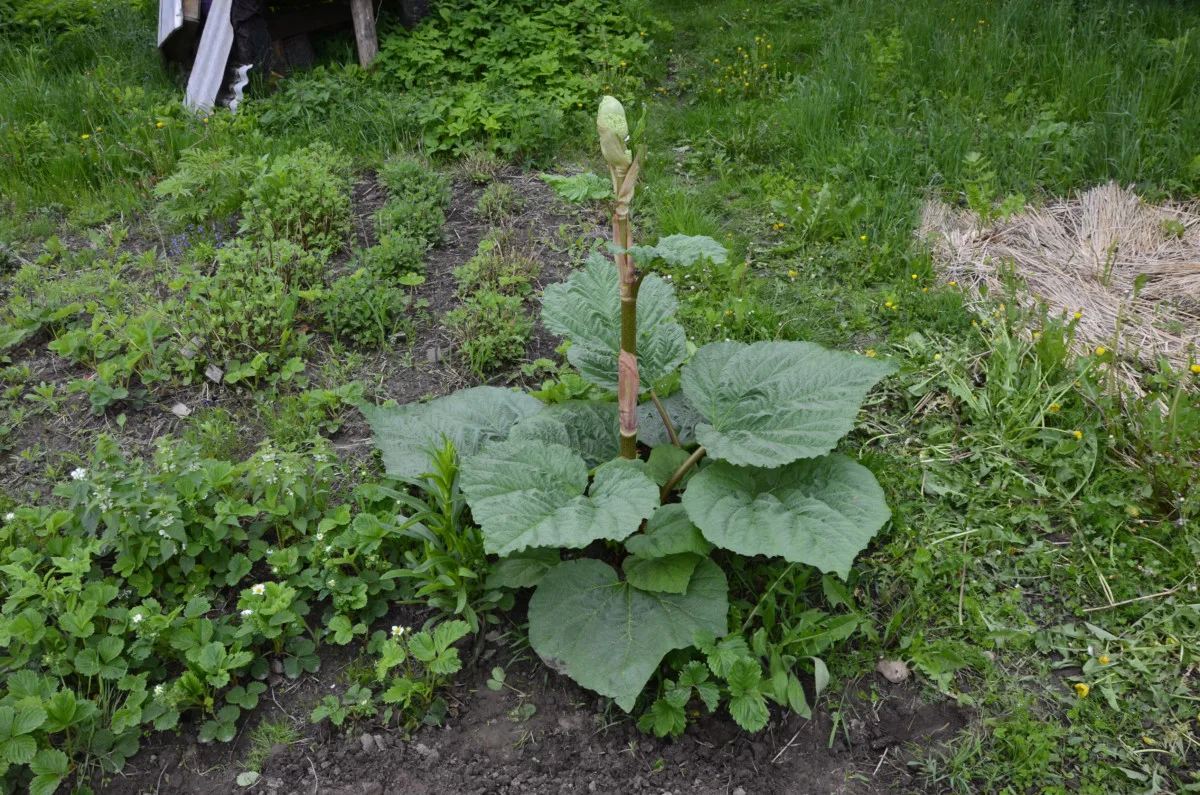
Self Preservation
Every plant’s goal is to continue to make more of itself. Let’s face it; all plants are bent on world domination, even your rhubarb. When a rhubarb plant flowers, it’s going to seed or bolting. For whatever reason, the plant has decided to create more of itself via a flower that will release seeds.
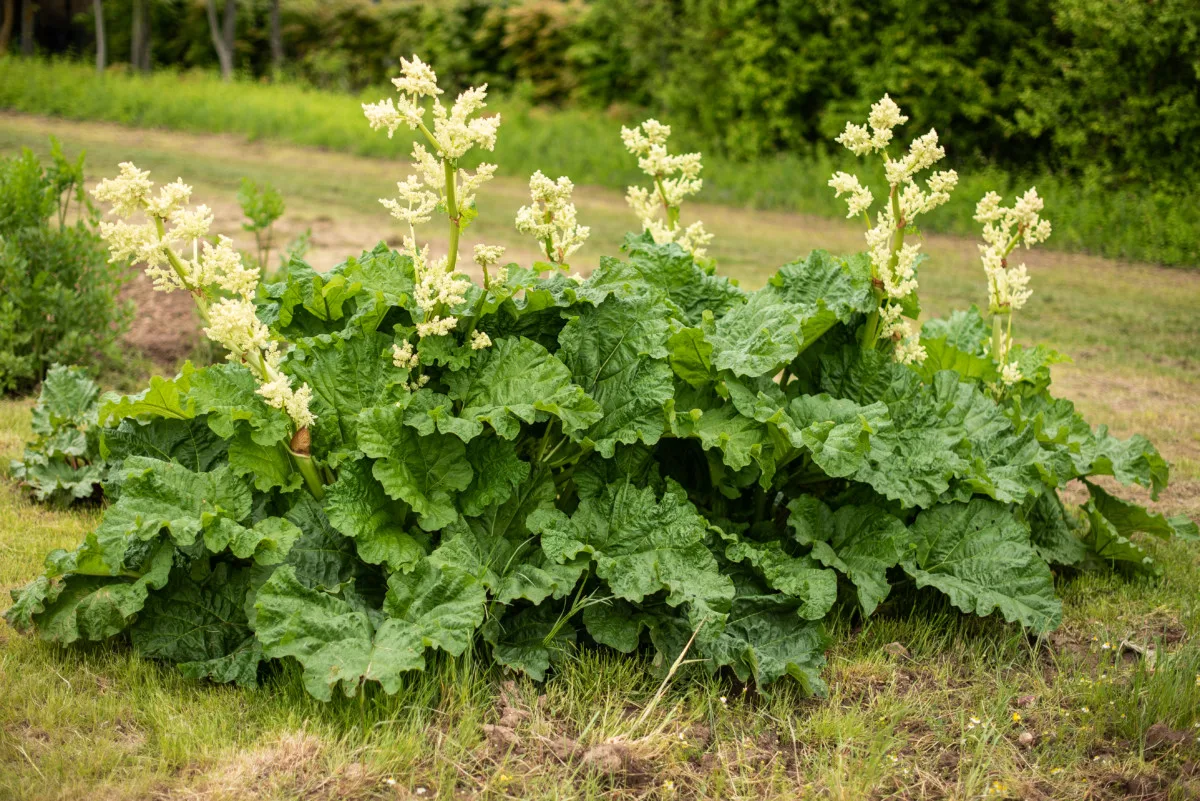
While this is perfectly normal, and all plants will do it eventually, some factors will trigger a plant to flower. For instance, heirloom varieties of rhubarb are more likely to bolt than modern hybrids. Rhubarb is also a cool-weather-loving plant, so an especially hot spring may cause your rhubarb to bolt. Of course, stress from an infestation of pests or disease can cause rhubarb to go to seed as well.
Cutting Your Rhubarb Flower
Because you don’t want seeds and want rhubarb stalks instead, you need to remove the rhubarb flower as soon as possible. This will let the plant know that it needs to make more leaves, not flowers.
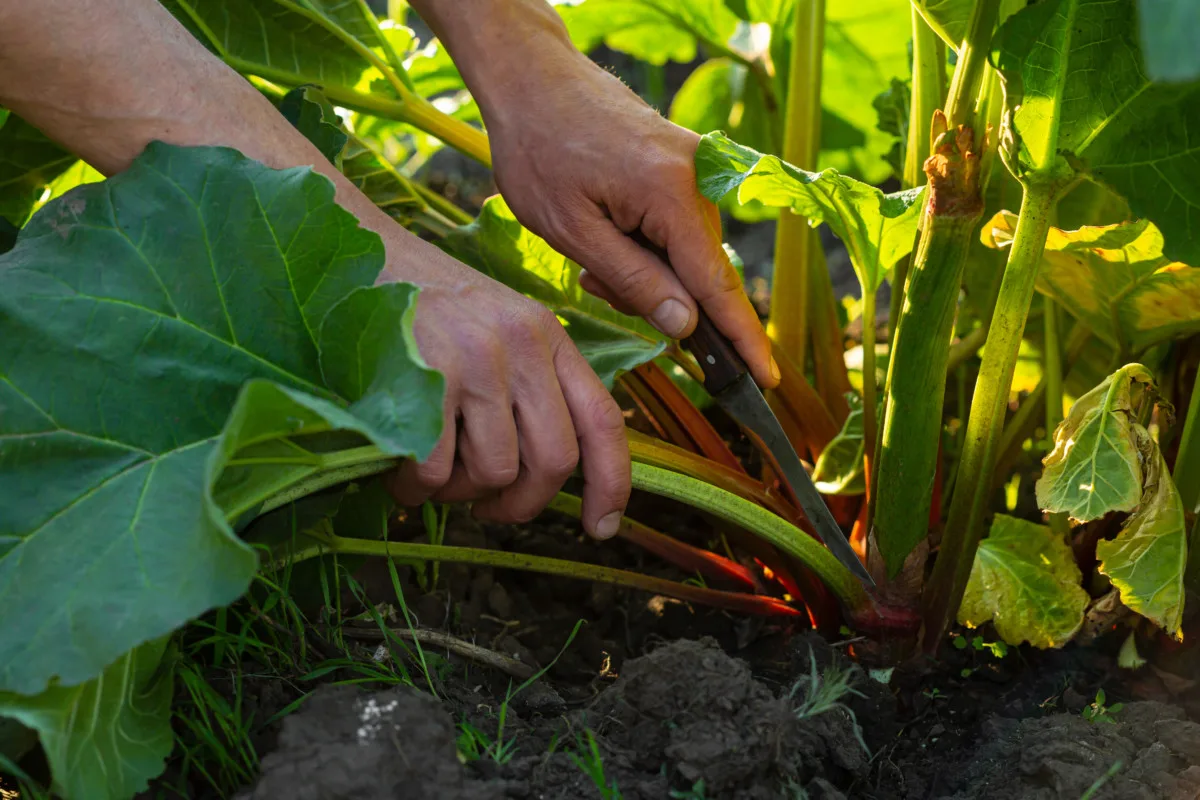
Whenever you’re cutting or pruning your plants, you want to start with clean, sharp tools. A clean cut ensures the plant will heal quickly, which lessens the likelihood of disease.
Cut the flowering stalk or stalks as close to the crown as you can get. You may have to shove a few of those large leaves out of the way to get down to the crown.
If you leave too much of the stalk present, it can rot and, left unchecked reach the crown, causing the loss of the plant. Not to mention, slugs and insects may decide to come and munch on the leftover stalk, again causing damage to the plant.
How to Prevent Your Rhubarb from Flowering
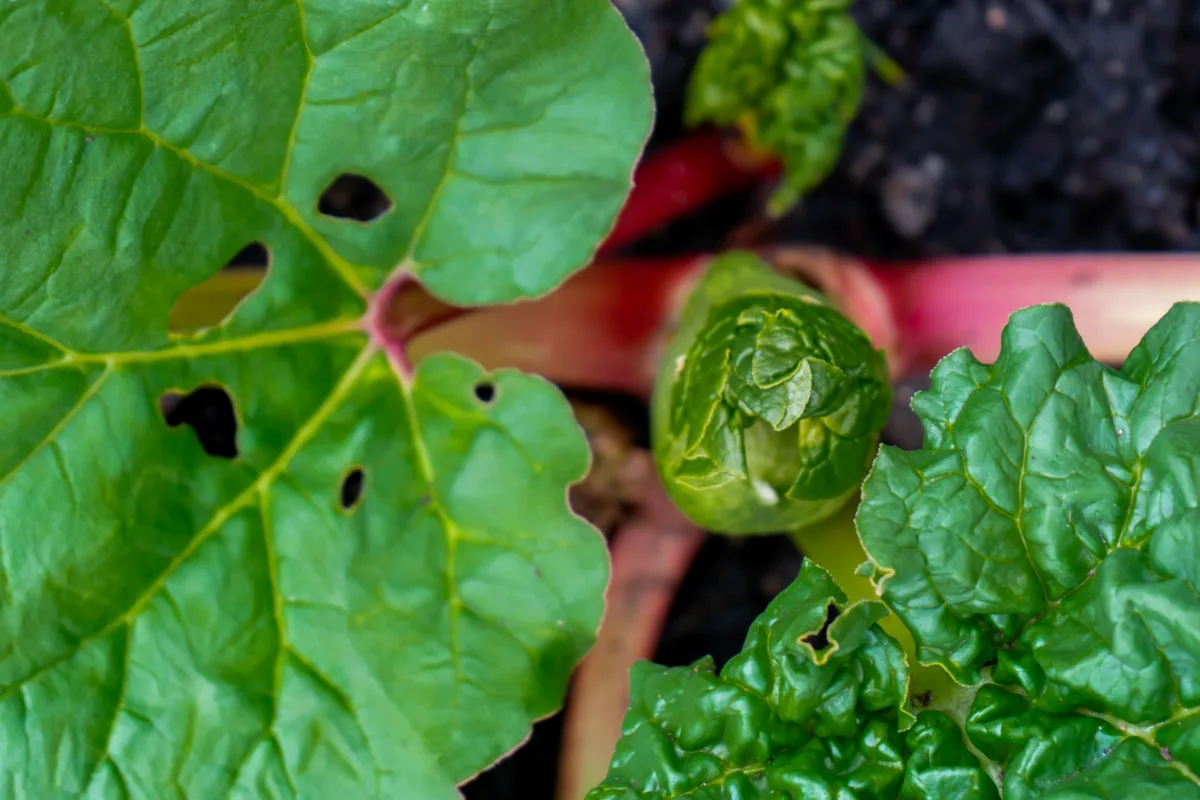
The best way to keep rhubarb from going to seed is to divide older plants. Making ‘new’ plants by dividing a more mature plant has a way of rejuvenating each new section.
If your rhubarb patch is five years or older and has begun to flower, that’s a good sign that it’s ready to divide, which is great news because spring is a great time to divide your rhubarb patch. However, if you haven’t finished harvesting yet, you may want to wait until the fall to divide the crowns.
It Is a Flower After All
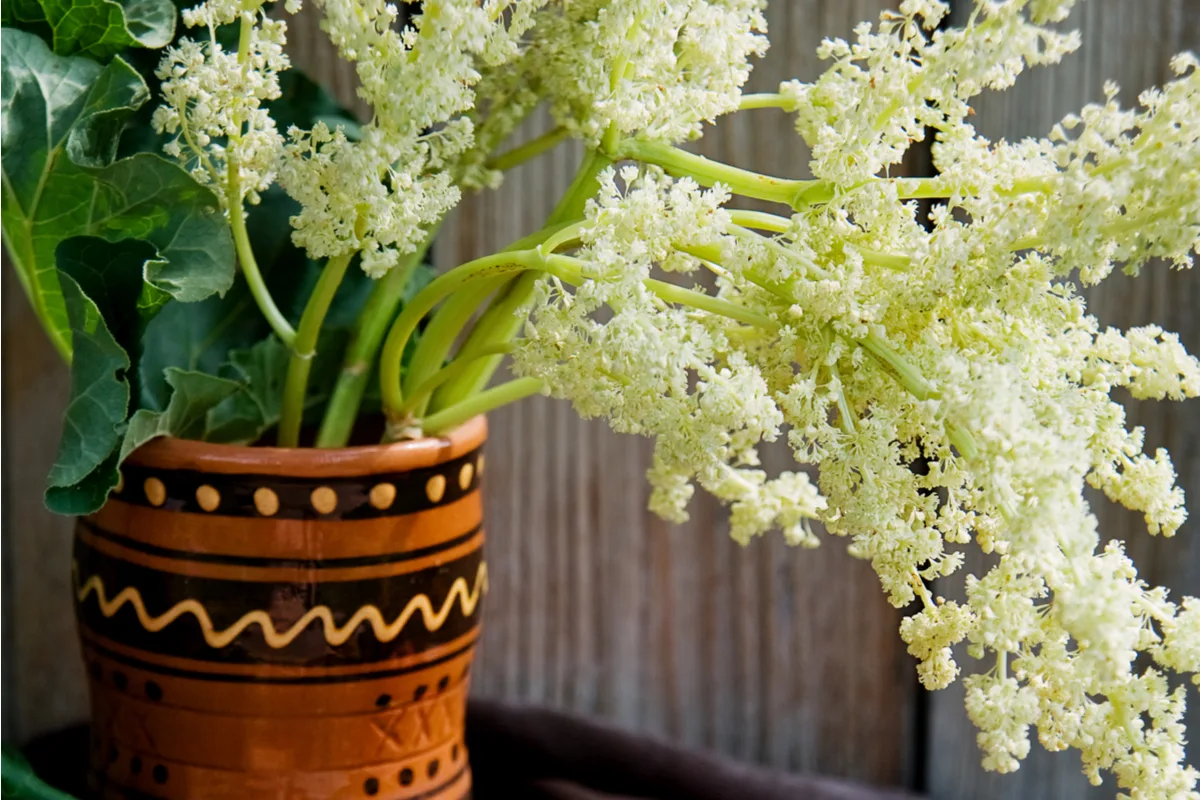
While most folks pitch their rhubarb stalks that have begun to go to seed, consider enjoying it for the stunning flower it is. They truly are an incredibly beautiful part of the plant. Place the cut stems in a heavy-bottomed vase with a few small leaves for an incredible floral statement.
Can I Save the Seeds?
If you’ve lopped off the flowering stalk at the appropriate time, no. You won’t be able to save the seeds, as they won’t be developed. Remember that we want to cut off these stalks as soon as we find them specifically to prevent the plant from putting too much energy into developing the seeds.
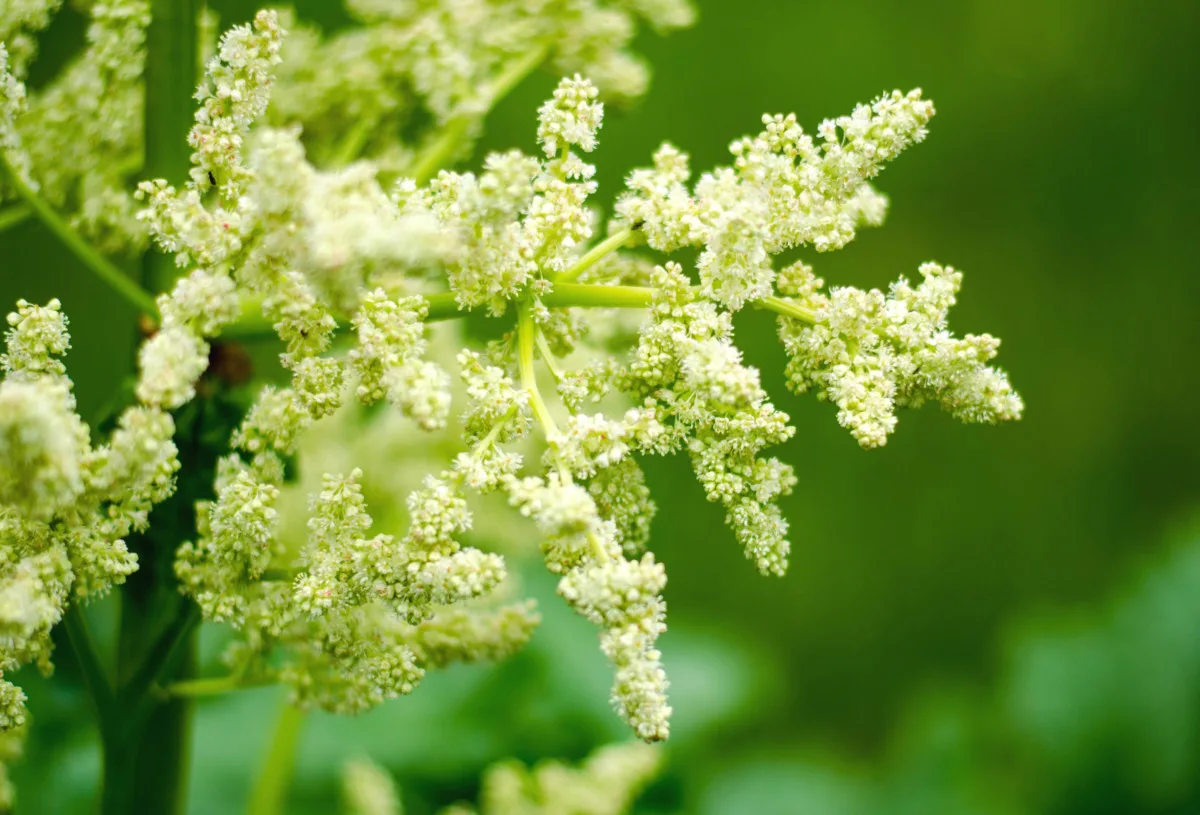
Besides, although you can grow rhubarb from seed, it takes a couple of years for the crown to develop to the point where you can harvest from it. Growing rhubarb from an established crown is the fastest way to go.
What If My Rhubarb Has Never Flowered?
Perhaps you’re just here out of curiosity. Or your neighbor mentioned their rhubarb flowered; now you’re wondering if there’s something wrong with yours. (I’m sure your rhubarb is just fine.)
Only older, more mature rhubarb plants tend to flower. If your rhubarb crown is less than three or four years old, it’s unlikely it will flower. It also depends on the variety; as previously mentioned, some are more prone to bolting than others.
You can consider yourself lucky if you’ve never seen a flowering rhubarb stalk in your rhubarb patch. It’s one less spring chore to do. Speaking of chores, have you taken care of your spring rhubarb chores yet?
Read Next:

Get the famous Rural Sprout newsletter delivered to your inbox.
Including Sunday ramblings from our editor, Tracey, as well as “What’s Up Wednesday” our roundup of what’s in season and new article updates and alerts.


